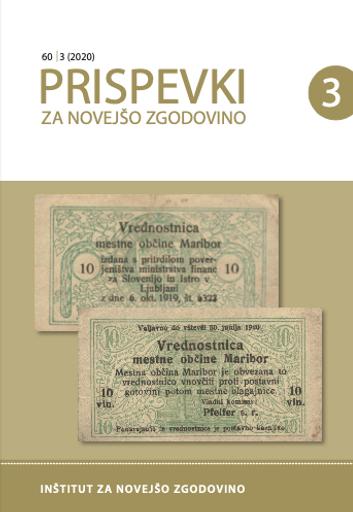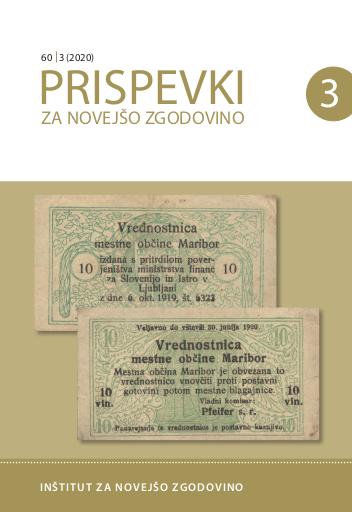/
Serijske publikacije
/
Prispevki za novejšo zgodovino
Plin, elektrika in možje, zaslužni za njun prihod v Maribor


To delo avtorja Martin Bele je ponujeno pod Creative Commons Priznanje avtorstva-Brez predelav 4.0 Mednarodna
Datoteke (1)

Opis
The present text deals with the development of Maribor – the capital of Styria, Slovenia – during the five decades leading up to World War I. In this period, Maribor made significant progress in many different areas. Its population grew considerably and it became home to many new institutions, including monumental buildings and industrial plants. Above all, it was very well connected by the railway. The arrival of natural gas and electricity into the city represents the central focus of the present text. The main reason for the construction of the local gasworks was the city’s (poorly organised) street lighting. Electricity found its way into the city primarily thanks to Maribor’s leading industrial magnates (in particular Karl Scherbaum, Ludwig Franz, and Franz Neger). These individuals used electricity for the illumination of their establishments as well as to power their manufacturing machines.
Metapodatki (12)
- identifikatorhttps://hdl.handle.net/11686/45017
- naslov
- Plin, elektrika in možje, zaslužni za njun prihod v Maribor
- Gas, Electricity and Men Who Ensured Their Arrival in Maribor
- avtor
- Martin Bele
- soavtor
- Jure Gašparič (gl. ur.)
- Andreja Jezernik (lekt.)
- predmet
- Maribor
- plin
- elektrika
- prva svetovna vojna
- Avstro-Ogrska
- elektrarna na Fali
- Georg Graff
- Karl Scherbaum
- Ludwig Franz
- Franz Neger
- natural gas
- electricity
- World War I
- Austria-Hungary
- Fala hydroelectric power plant
- opis
- Pričujoče besedilo obravnava razvoj glavnega mesta slovenske Štajerske v približno petih desetletjih pred koncem prve svetovne vojne. Maribor je v obravnavanem časovnem obdobju napredoval v številnih ozirih. Poleg tega, da je njegovo prebivalstvo zelo naraslo, so v njem nastajali vedno nove institucije, monumentalne stavbe, industrijski obrati in vedno boljše železniške povezave. Predvsem v omenjeno obdobje segajo začetki uporabe električne energije in plina, kar v prispevku tudi zavzema osrednji prostor. Pri nastanku mariborske plinarne je vodilno vlogo sicer igrala potreba po ureditvi in modernizaciji mestne razsvetljave. Medtem je elektrika pot v mesto našla predvsem po zaslugi velikih in premožnih industrialcev (predvsem Karla Scherbauma, Ludwiga Franza ter Franza Negerja). Ti so jo prav tako uporabljali za razsvetljavo obratov ali pa za optimalnejše obratovanje svojih proizvodnih enot
- The present text deals with the development of Maribor – the capital of Styria, Slovenia – during the five decades leading up to World War I. In this period, Maribor made significant progress in many different areas. Its population grew considerably and it became home to many new institutions, including monumental buildings and industrial plants. Above all, it was very well connected by the railway. The arrival of natural gas and electricity into the city represents the central focus of the present text. The main reason for the construction of the local gasworks was the city’s (poorly organised) street lighting. Electricity found its way into the city primarily thanks to Maribor’s leading industrial magnates (in particular Karl Scherbaum, Ludwig Franz, and Franz Neger). These individuals used electricity for the illumination of their establishments as well as to power their manufacturing machines.
- založnik
- Inštitut za novejšo zgodovino
- datum
- 01. 01. 2020
- tip
- besedilo
- jezik
- Slovenščina
- jeDelOd
- pravice
- licenca: ccByNd
